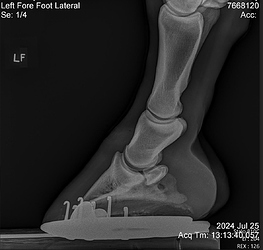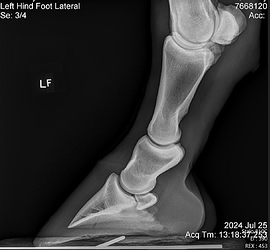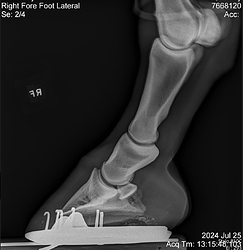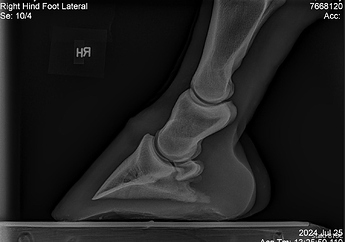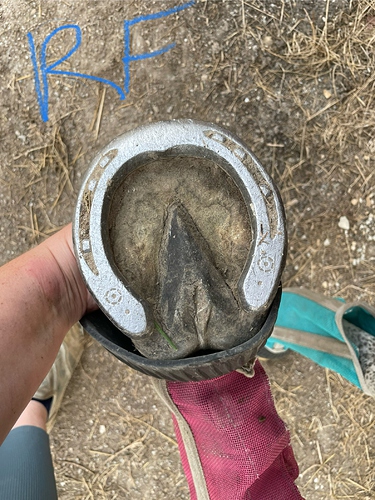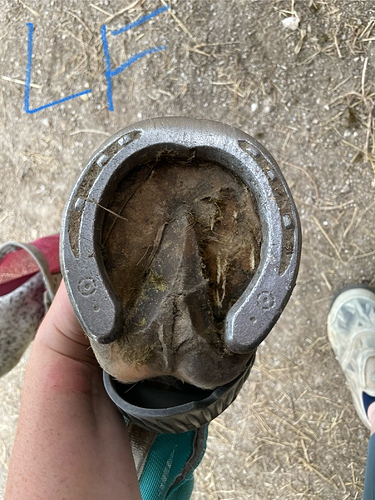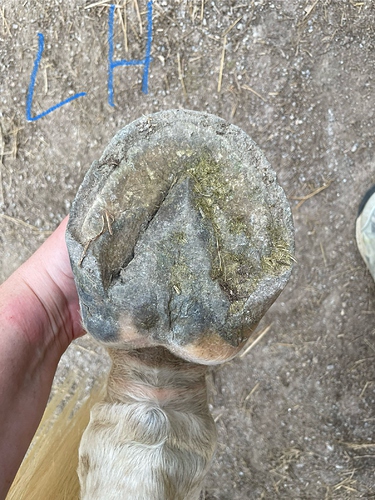9 year old OTTB mare that I have owned for 4 years now. Her feet are pretty typical TB, low heels, long toe, thin soles. She just recently returned to work after having a foal in 2023 and being barefoot for the past 3 years. She was comfortable barefoot just out in the field, but needs front shoes when in work. When barefoot she gets trimmed every 4 weeks, but now with front shoes on she is on a 6 week cycle.
Her feet tend to grow out instead of up, if that makes sense. She never grows heel, and her quarters flare out and are prone to cracking. My farrier has done a lot of work in the time I’ve owned her to improve the cracking/chipping and try to keep her feet in a decent shape without taking too much off and making her sore. I’ve always suspected due to her anatomy and the way she stands (almost always camped under in her hind) that she had negative palmar angles. Finally decided to have the vet out to x ray, and confirmed my suspicions. Negative 2 degrees in both hinds, and negative 1 degree in the left front, level (0 degrees) right front.
I plan to chat with my farrier before his next visit on his suggestions to correct the NPA, but would love to hear some input from others who are more familiar with this or have dealt with this in their own horses. Is negative 2 degrees very significant NPA, or minor? Sole depth was measured at 16 mm in front, 18 mm in hinds. Would love to increase this as well if possible. Mare currently gets a hoof supplement from SantaCruz, but open to suggestions of other products that have worked well for others.

